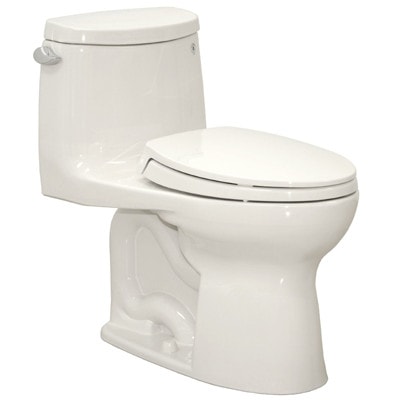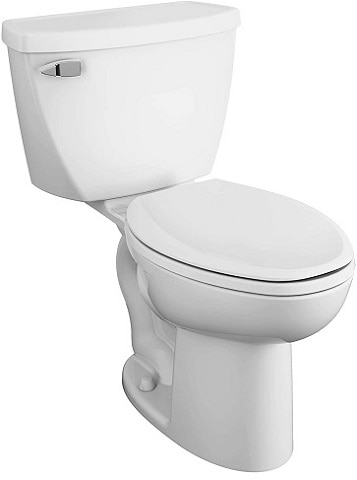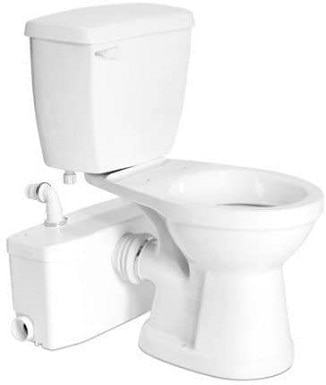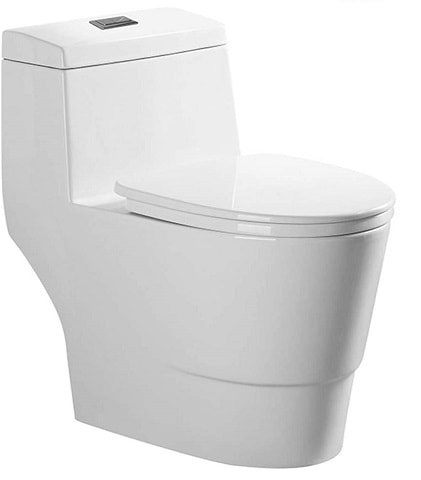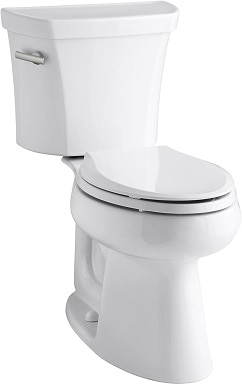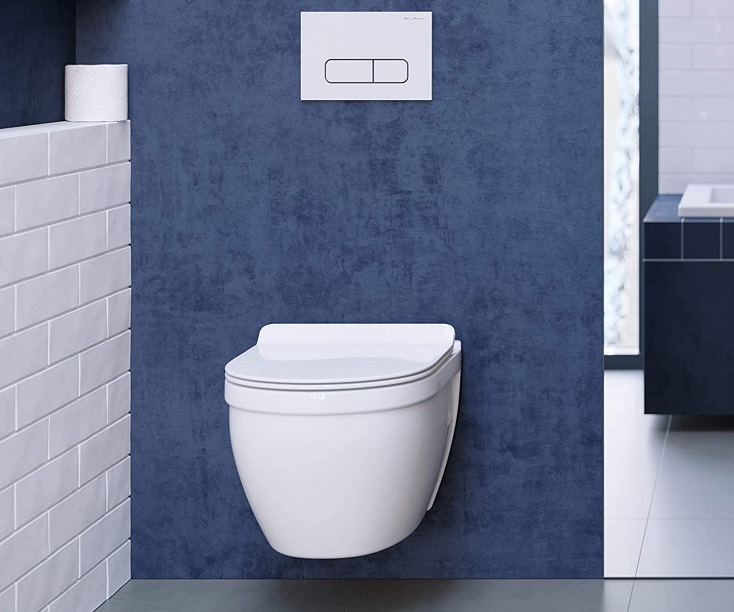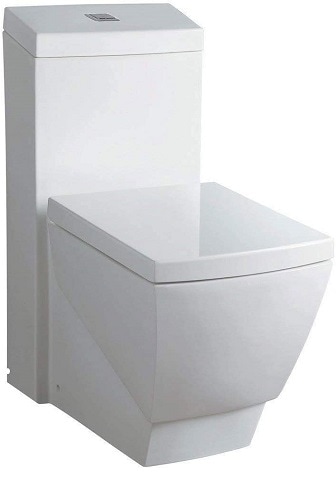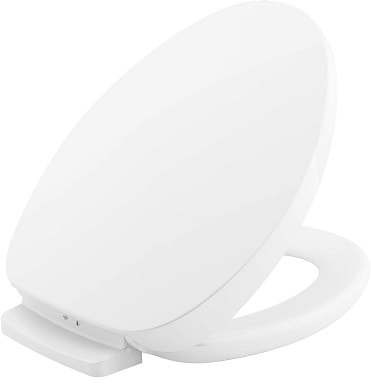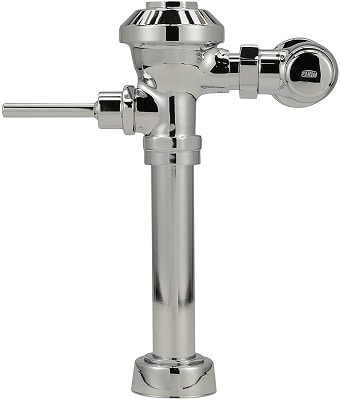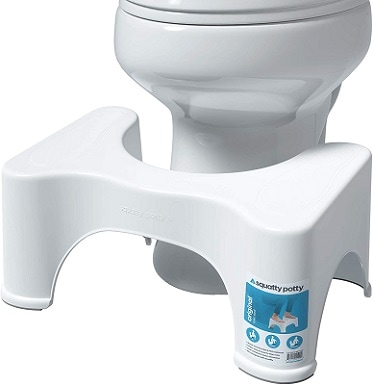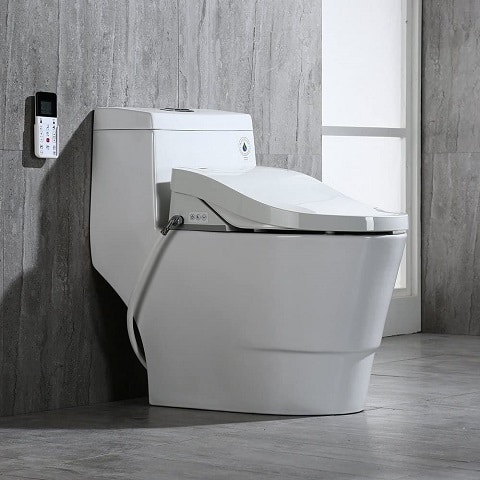23 Different Types of Toilets – A Complete Overview
-

- Last updated:

Picture a toilet. An image probably just popped into your head, but it almost certainly wasn’t the same image that the next person who reads this will see. While we tend to think all toilets are the same, there’s a massive range of contraptions that all fit under the term.
Why does this matter? If you’re in the market for a new toilet, you could just default to the sort you’ve always had. But what if, somewhere out there, there’s a toilet you’ll like better?
Given how important a good bathroom experience is to overall life satisfaction, it’s worth reviewing all your options first. Follow along as we present our guide to the wonderful world of alternative toilets. This guide is broken down into subcategories for the five ways toilets tend to differ: basic type, shape, design, flush controls, and bonus features.
 The 23 Different Types of Toilets
The 23 Different Types of Toilets
Basic Types of Toilets
A toilet’s main job is to dispose of liquid and solid human waste in a quick and sanitary manner. There are a few ways they go about doing this.
1. Waterless Toilet
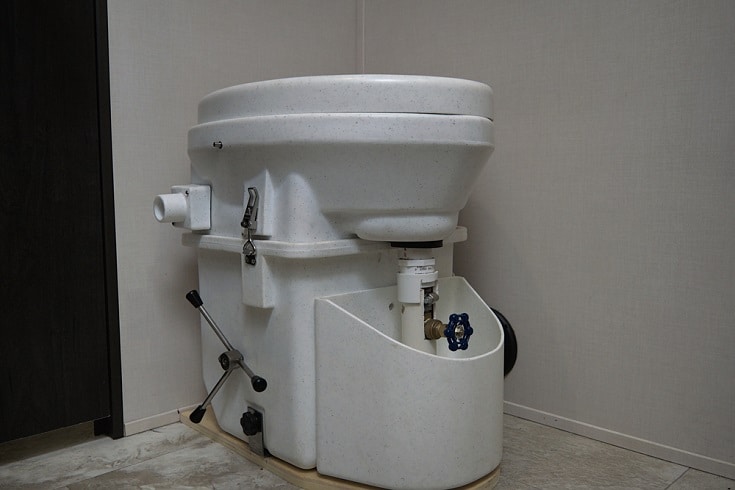
Instead of getting rid of waste by washing it into a sewer system or septic tank, waterless toilets find ways to neutralize the waste until it can be disposed of manually. Port-o-johns are the most common form of waterless toilet. They use a mixture of chemicals to sanitize waste, prevent it from smelling, and make it look less repulsive (that’s why port-o-john liquid is blue).
However, you won’t want a port-o-potty as your permanent in-home solution. The most popular form of permanent waterless toilets is the composting toilet. These contain sawdust or another bulking agent, which, when mixed with human urine and feces, makes them suitable for use as fertilizer.
Sometimes called “nightsoil,” composted human waste has been used to grow crops since time immemorial and is still popular among people looking to reduce their environmental footprint.
2. Double-Cyclone Toilet
If you want to conserve water but aren’t quite ready to start pooping in a pile of sawdust, double-cyclone toilets are a great option. This innovative new design uses two jet streams to clean out the bowl with as little water as possible, removing the need always to keep a full bowl.
3. Pressure-Assisted Toilet
You might be familiar with pressure toilets from airplane lavatories or any other permanent bathroom used by many people in a day. Water flowing into the tank builds up air pressure. When you pull the handle, all the pressure is released immediately for a quick and powerful flush.
Because pressure toilets move material with so much force, they hardly ever clog. They’re also done flushing quickly so you can clear the stall for the next person. The disadvantage, other than the loud and startling flushing noise, is that these toilets are more expensive to maintain.
4. Gravity Toilet
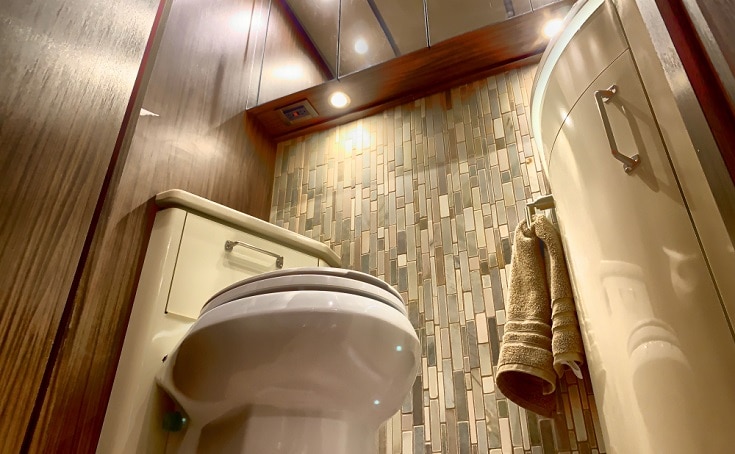
Finally, we’ve landed on the kind you’re likely most familiar with. Gravity toilets use levers, valves, and the force of gravity to move waste out and clean water in. They usually exist as a natural extension of municipal water systems.
Gravity-fed toilets are quiet, sanitary, and easy to maintain, which explains why they’re the most popular choice for private homes. However, in their traditional form, they can use a lot of water.
5. Upflush Toilet
Upflush toilets, also known as macerating toilets, are for any space where you’d like to add a water closet but can’t directly access the plumbing system. While most toilets use gravity or air pressure to move waste into either a compost pile or the sewer system, upflush toilets first send the waste to a holding tank where it’s chewed up by blades.
Once the waste is cut small enough, a pump sends it through a line to your home’s sewer link. This pump is the macerating toilet’s biggest potential point of failure, which means it shouldn’t be used as the primary toilet in a family home. Instead, it’s useful for adding a bathroom area to a basement or shed.
6. Urinal
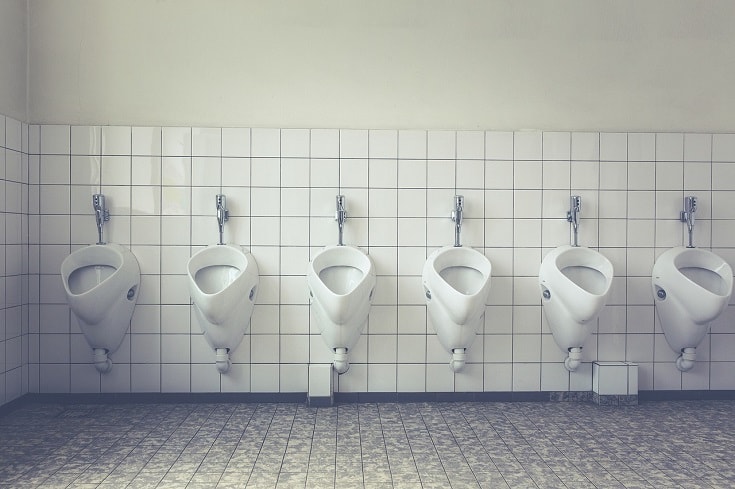
Yes, you can have a urinal in your home. If you have a lot of space in your bathroom, want to save water, and are capable of peeing standing up, they can pay for themselves pretty quickly. Urinals can either have a flush mechanism built-in or, to conserve even more water, can flush without water using fragrant disinfectants.
Toilet Shapes
Once you’ve decided on a core mechanism, your next step is to figure out what shape you want your toilet to be. This determines not just what you’ll be sitting on but also how easy your toilet will be to clean and repair.
7. One-Piece Toilet
In these toilets, the bowl and tank form a single unit with no gaps. The seat may or may not still be attached via a separate hinge. The big advantage of a one-piece toilet is that it’s much easier to set up. Just put it in the right place, connect the tank and bowl, and you’re good to go. Fewer pieces also mean fewer crevices for dirt and grime to gather. On the other hand, they’re heavy and hard to transport and usually much more expensive than two-piece toilets.
8. Two-Piece Toilet
These toilets consist of a bowl and tank constructed separately and connected by pipes. The bowl sits on the floor. The tank must be mounted somehow, whether to the bowl, the wall, or both. Two-piece toilets are simpler to construct and therefore cheaper than one-piece toilets. However, extra pieces lead to more bulk and less space in your bathroom. They’re also more prone to gathering dirt.
9. Wall-Mounted Toilet
It’s growing increasingly common to see toilet bowls mounted directly onto bathroom walls, not touching the floor. Whether you’re going for a certain aesthetic or just trying to save space, these seemingly tankless commodes can be an excellent choice.
These toilets aren’t tankless. The tank is hidden inside the wall while the bathroom is being built or during a later renovation. It can be a real pain to reach the tank later for maintenance, so we recommend adding an access panel.
10. Tankless Toilet
What’s the next step after hiding the tank inside the bathroom drywall? Removing it entirely, of course! Tankless toilets cut out the middleman by connecting directly to their primary water source, whether a greywater tank or the city water main.
Going tankless is usually done to save space, making this a common choice for tiny houses and RVs. Be warned, though, that these toilets might demand more water for a clean flush.
Toilet Design Choices
Aside from the overarching shapes in the last section, toilets can make any number of smaller design choices. This section covers some of the more minor, but no less impactful, ways you can customize your commode.
11. Unconventional Tank Shapes
The standard shape for a toilet tank is a squat, wide rectangle with rounded corners and the long side facing out. This isn’t ideal for all bathrooms, though. Toilets are available with triangular tanks to fit into corners, square tanks to match a modernist aesthetic, or taller “comfort” tanks that are easier to sit against.
12. Unconventional Bowl Shapes
Just like tanks, you can get toilet bowls in various shapes and designs. Round bowls are the most common because they balance a high-water capacity with efficient use of space.
Elongated bowls are said to be a better fit for adult rear ends. They can be more comfortable, but they also use more water and don’t always get scoured clean when flushed. They’re also sold in compact form if you’re worried about taking up space. Square bowls are also available but aren’t very comfortable, efficient, or easy to clean. They basically just look cool.
13. Colors Other Than White

Without fail, toilets are almost always white to show gross stains, so they can be cleaned away. Yet there are places you can look if you want a bowl, tank, or entire toilet of a different color. We still recommend avoiding brown, though.
14. Different Seat Choices
When choosing a toilet seat, getting one that fits your bowl is most important. Like bowls, your choice is between a more compact seat to save bathroom space or a longer seat for greater comfort.
You have a few customization options for your seat other than its shape. Soft-close seats don’t slam down when you let go of them but drift gently shut instead. Quick-remove seats are easy to take off for deep cleaning. You can also get removable seat covers for added luxury.
15. Trapway Choices
The trapway is an overlooked but indispensable part of your toilet. It’s a curved pipe that separates the bowl from the drainage system, which traps unpleasant odors (hence the name) and keeps your bathroom from smelling like an open sewer.
It’s also another chance to customize your toilet’s design. You have three choices: exposed trapways where the s-bend is visible on its own, skirted trapways where the bend is set in a porcelain mount, and concealed trapways where you can’t see the pipe at all.
Flushing Controls
The days are long past when the only way to flush a toilet was to pull on a handle and set the water running. Modern flushing options can help you stay hygienic, save water, or just keep things simple.
16. Single Flush
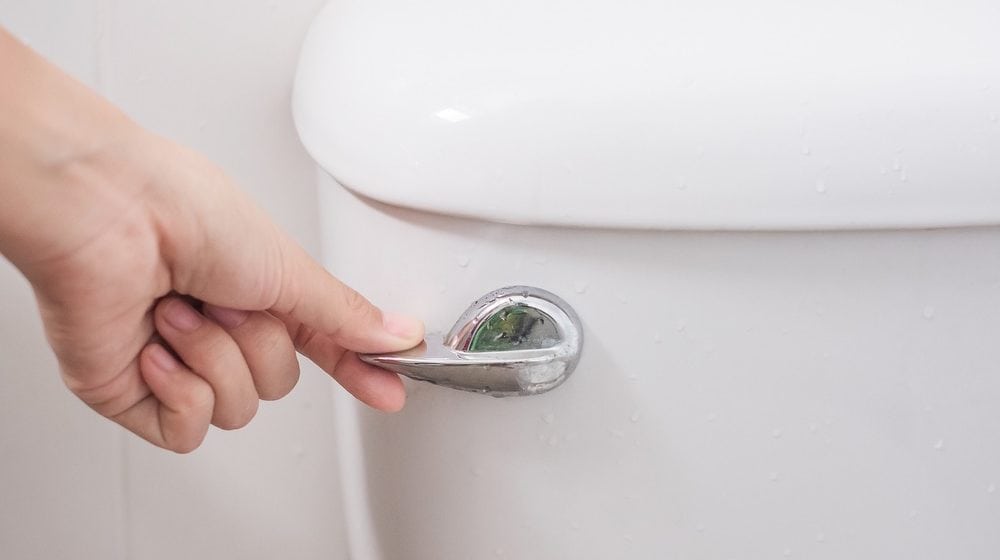
This is the traditional option. Single flush toilets have one trigger, usually a handle, sometimes a button, and only flush one way, with the same amount of water each time.
17. Dual Flush
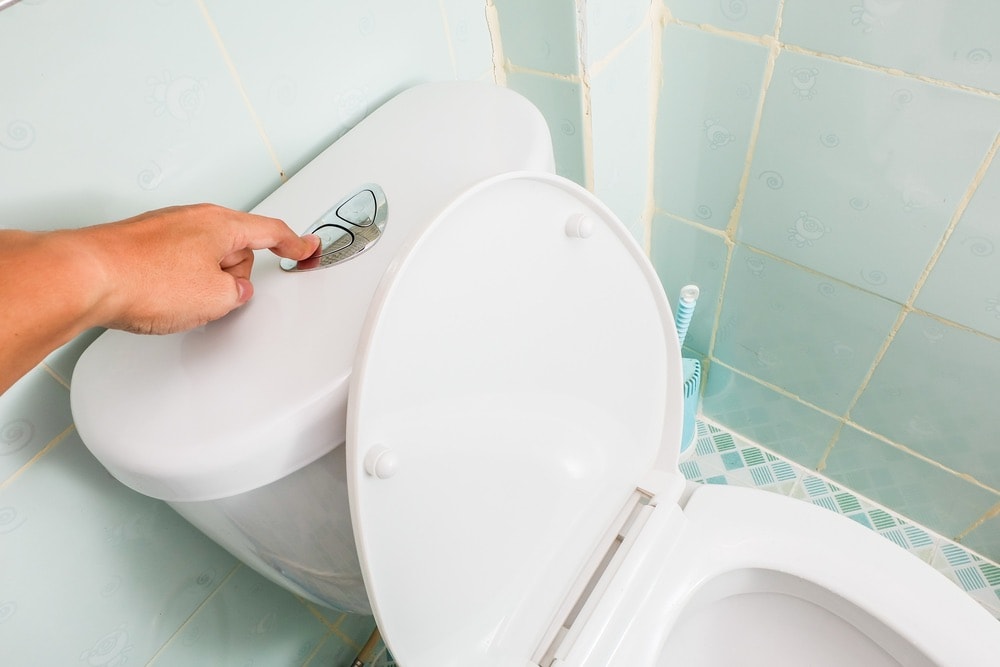
Dual flush toilets are increasing in popularity, especially in public bathrooms. These flush with two buttons or a handle that can be pushed in two directions. Flushing up uses less water to clear liquid waste while flushing down uses more water to wash away solid waste.
18. Touchless Flush
It’s never fun to touch a toilet handle, knowing that other people have already touched it right after using the bathroom. Touchless flush technology makes it so you don’t have to.
These toilets flush with the same sensors that touchless sinks and paper towel dispensers use. Sometimes it’s designed to sense when the user stands up and flushes automatically; other times, you’ll wave your hand over it to activate the flush.
19. Flushometer
Flushometers are a common flushing method for tankless toilets connected directly to water mains. Consisting of one long handle attached to a ball and socket, you’re probably familiar with them from public restrooms. You might use one of these if you have a tankless toilet or urinal in your home.
Bonus Features
Finally, let’s talk about some of the bells and whistles you can add to your toilet.
20. Squatting platform
Studies have shown that pooping from a squat is healthier than doing it from a seated position. If you ever have trouble defecating, you can add a platform to your toilet seat that will let you crouch over the bowl.
21. Smart toilet
Toilets are not immune to the internet-of-things tsunami. While they’re still in the premium price range, smart toilets can adjust the seat to a comfortable temperature automatically, sense how much water they need to flush,, and clean themselves off with air dryers.
22. Bidet/washlet

Anybody who’s ever used one of these swears by it. A bidet is a freestanding appliance that uses a jet of water in place of toilet paper, while a washlet is the same thing attached to a bowl.
23. Deodorizer
Many toilets can now be fitted with deodorizers that neutralize all unpleasant scents. No more striking matches in the bathroom!
You may also like:
Featured Image: Martin Vorel, Libreshot
Contents
 The 23 Different Types of Toilets
The 23 Different Types of Toilets